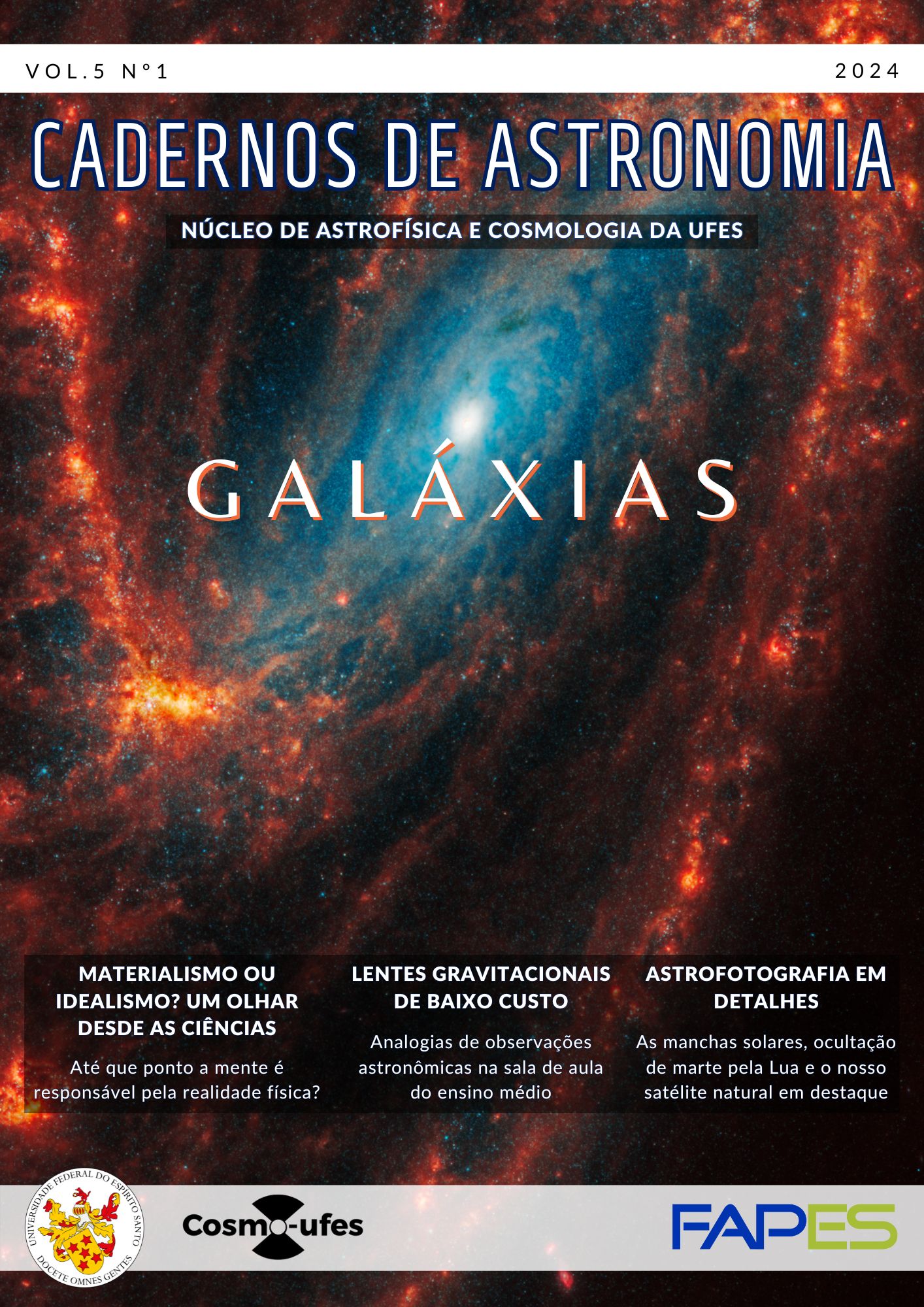A relação velocidade-distância para as galáxias estabelecida por Edwin Hubble
DOI :
https://doi.org/10.47456/Cad.Astro.v5n1.43115Mots-clés :
lei de Hubble-Lemaître, constante de Hubble, história da cosmologiaRésumé
A relação linear entre as velocidades de recessão das galáxias e suas distâncias ou, de modo equivalente, entre os desvios para o vermelho nos espectros das galáxias e suas distâncias, atualmente denominada lei de Hubble-Lemaître, é um resultado fundamental na área da Cosmologia, que pode ser entendido, de acordo com o modelo cosmológico padrão, como consequência de um Universo em expansão. Em um trabalho pioneiro publicado em 1929, Edwin Hubble (1889-1953) forneceu evidências consistentes da validade desta lei, com base em dados observacionais. Apresenta-se aqui uma tradução do inglês para o português deste influente artigo.
Téléchargements
Références
[1] G. J. Whitrow, Dicionário de biografias científicas (Contraponto, Rio de Janeiro, 2007).
[2] H. S. Leavitt e E. C. Pickering, Periods of 25 Variable Stars in the Small Magellanic Cloud, HCOC 173(1) (1912). Disponível em https://ui.adsabs.harvard.edu/abs/1912HarCi.173....1L, acesso em jan. 2024.
[3] D. Iria Machado, As estrelas Cefeidas enquanto velas-padrão: A relação período-luminosidade tal qual apresentada por sua descobridora, Cadernos de Astronomia 2(2), 170 (2021). DOI: https://doi.org/10.47456/Cad.Astro.v2n2.34906
[4] H. S. Kragh, Conceptions of Cosmos: From Myths to the Accelerating Universe: A History of Cosmology (Oxford University Press, Oxford, 2007). DOI: https://doi.org/10.1093/acprof:oso/9780199209163.003.0002
[5] B. W. Carroll e D. A. Ostlie, An Introduction to Modern Astrophysics (Pearson Addison-Wesley, Boston, 2007).
[6] E. Hubble, A relation between distance and radial velocity among extra-galactic nebulae, PNAS 15(3), 168 (1929). DOI: https://doi.org/10.1073/pnas.15.3.168
[7] G. Paturel, P. Teerikorpi e Y. Baryshev, Hubble Law: Measure and Interpretation, Found Phys. 47(9), 1208 (2017). ArXiv:1801.00128. DOI: https://doi.org/10.1007/s10701-017-0093-4
[8] A. Liddle, An Introduction to Modern Cosmology (Wiley, Chichester, 2015), 3a ed.
[9] G. Lemaître, Un univers homogène de masse constante et de rayon croissant, rendant compte de la vitesse radiale des nébuleuses extra-galactiques, Ann. Soc. Sci. Bruxelles A47(49) (1927). Disponível em https://ui.adsabs.harvard.edu/abs/1927ASSB...47...49L/abstract, acesso em jan. 2024.
[10] E. Gibney, Belgian priest recognized in Hubble-law name change, Nature - News, 30 out. (2018). DOI: https://doi.org/10.1038/d41586-018-07234-y
[11] N. A. Bahcall, Hubble’s law and the expanding universe, PNAS 112(11), 3173 (2015). DOI: https://doi.org/10.1073/pnas.1424299112
[12] W. L. Freedman et al., Final results from the Hubble Space Telescope key project to measure the Hubble constant, ApJ 553(1), 47 (2001). ArXiv:astro-ph/0012376. DOI: https://doi.org/10.1086/320638
[13] W. L. Freedman, Measurements of the Hubble constant: tensions in perspective, ApJ 919(1), 16 (2021). DOI: https://doi.org/10.3847/1538-4357/ac0e95
Téléchargements
Publiée
Comment citer
Numéro
Rubrique
Licence
© Daniel Iria Machado 2024

Ce travail est disponible sous la licence Creative Commons Attribution 4.0 International .






